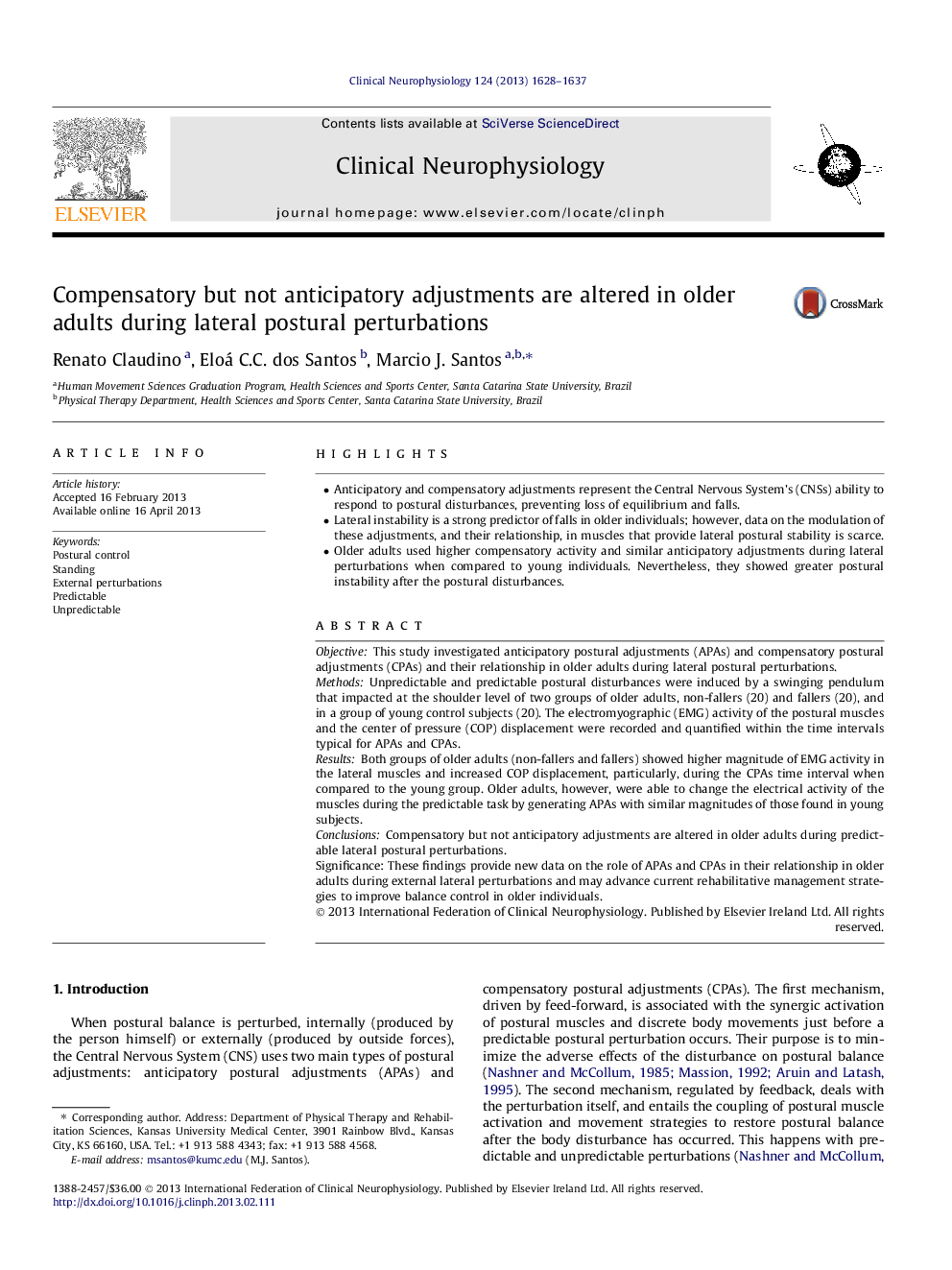| Article ID | Journal | Published Year | Pages | File Type |
|---|---|---|---|---|
| 3045189 | Clinical Neurophysiology | 2013 | 10 Pages |
•Anticipatory and compensatory adjustments represent the Central Nervous System’s (CNSs) ability to respond to postural disturbances, preventing loss of equilibrium and falls.•Lateral instability is a strong predictor of falls in older individuals; however, data on the modulation of these adjustments, and their relationship, in muscles that provide lateral postural stability is scarce.•Older adults used higher compensatory activity and similar anticipatory adjustments during lateral perturbations when compared to young individuals. Nevertheless, they showed greater postural instability after the postural disturbances.
ObjectiveThis study investigated anticipatory postural adjustments (APAs) and compensatory postural adjustments (CPAs) and their relationship in older adults during lateral postural perturbations.MethodsUnpredictable and predictable postural disturbances were induced by a swinging pendulum that impacted at the shoulder level of two groups of older adults, non-fallers (20) and fallers (20), and in a group of young control subjects (20). The electromyographic (EMG) activity of the postural muscles and the center of pressure (COP) displacement were recorded and quantified within the time intervals typical for APAs and CPAs.ResultsBoth groups of older adults (non-fallers and fallers) showed higher magnitude of EMG activity in the lateral muscles and increased COP displacement, particularly, during the CPAs time interval when compared to the young group. Older adults, however, were able to change the electrical activity of the muscles during the predictable task by generating APAs with similar magnitudes of those found in young subjects.ConclusionsCompensatory but not anticipatory adjustments are altered in older adults during predictable lateral postural perturbations.Significance: These findings provide new data on the role of APAs and CPAs in their relationship in older adults during external lateral perturbations and may advance current rehabilitative management strategies to improve balance control in older individuals.
